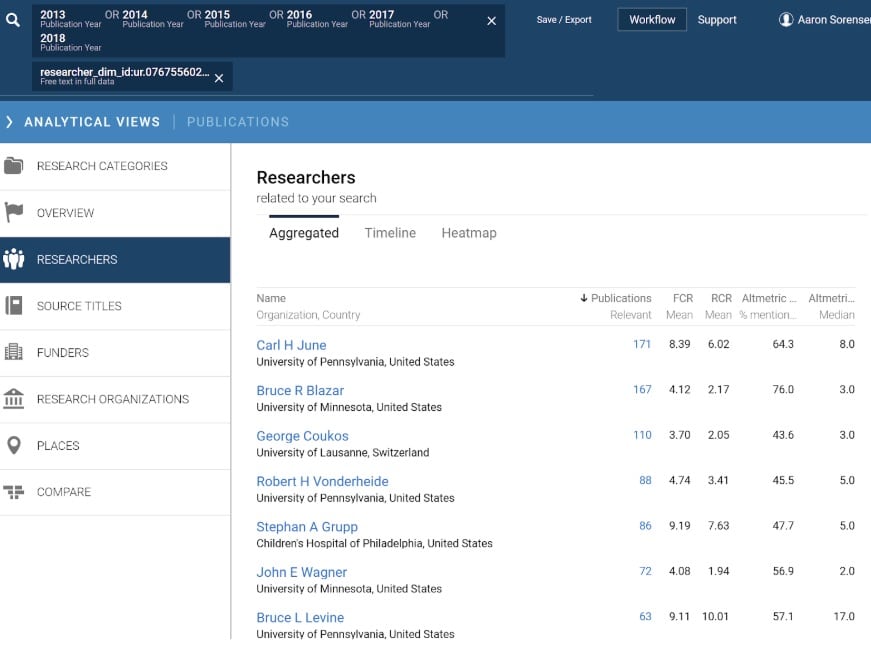Part 3: Who is Standing on June’s Shoulders?”
Aaron Sorensen, Director, Data Science Insights Dimensions
Our third and final part of this blog series continues the exploration of the breakthrough work in immunotherapy by Dr. Carl June. Dimensions data has allowed us, not only to view his current publications and recent collaborations, but also to connect historical funding to the scientific impact June has made in the field. In order to complete a holistic view of June’s research ecosystem, let’s dive into the next generation of scientists who are now building off June’s work or, in the words of Isaac Newton, who are now standing on Carl June’s “giant” shoulders.
By focusing on the scientists who most consistently cite June’s recent work, we can observe the differences between the new generation of immunotherapy investigators and earlier generations.

Reviewing the national affiliations from the past five years of the authors most frequently citing June, you’ll discover some interesting results. Most notably, Switzerland has crept into the second position and China, while not yet in the top five, makes its first appearance in the top ten. This is likely an indication that, as June’s approaches are becoming more mainstream, new investigators are entering the field in an attempt to bridge the last mile to taking immunotherapy from something only done as part of a clinical trial to becoming a “standard of care” treatment option.

More salient trends can be spotted when analyzing the grants landscape and digging into the the funder-data in this space. When viewing the dollar amounts from the most recent round of immunotherapy grants, one can observe that, of late, private foundations such as AACR and St. Baldrick’s have made substantial investments into June-like lines of investigation. In the past, the top funder positions were dominated by federal funding agencies whereas now we see private foundations investing very aggressively.

Since corporate funding of research is not done through grants, we must turn to the aggregation of papers acknowledging those companies in various publications as a method to track corporate investment in the field. When we do this for the most recent generation of June-citing research, you’ll notice that Novartis has made its way into the top ten in overall number of papers. Digging deeper into the aggregate metrics for the Novartis papers, you will see that, as was the case previously, they are all best in class. This is not a coincidence as Novartis has recently invested significantly in June’s work: http://blogs.nature.com/news/2012/08/novartis-gives-upenn-20-million-for-cancer-vaccine.html.

While we’ve managed to uncover a significant amount of data tracing three generations of immunotherapy, Dimensions has more than 96 million publications waiting to be explored. Create your free account today to start searching the research landscape.
